For 75 years, the presence and role of women within the UN has remained a central theme. From the early struggle to include a reference to gender differences in the UN Charter, through the years of promotion of the issue, to the present day when parity remains highly symbolic, and the COVID-19 pandemic threatens painstakingly acquired rights, the struggle of women in the organization remains topical.
Back in 1945, when the United Nations Charter was signed at the San Francisco Conference, the fight for gender equality was still in its infancy. Only 3% of the 850 delegates present were women, and of the 51 founding member states of the Organization, only 30 granted women the same voting rights as men.
"Everyone is entitled to all the rights and freedoms set forth ..., without distinction of any kind, such as race, color, sex, language, religion, political or other opinion, national or social origin, property, birth or other status." Charter of the United Nations
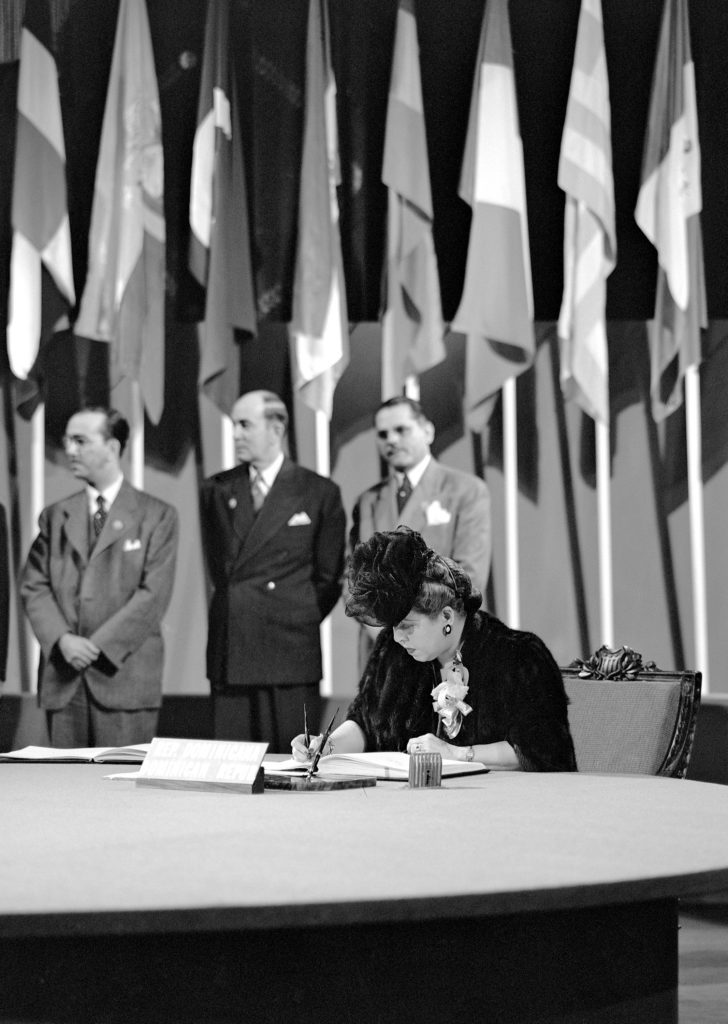
Minerva Bernardinos, Dominican Republic Delegate (1945). UN Photo/McLain. 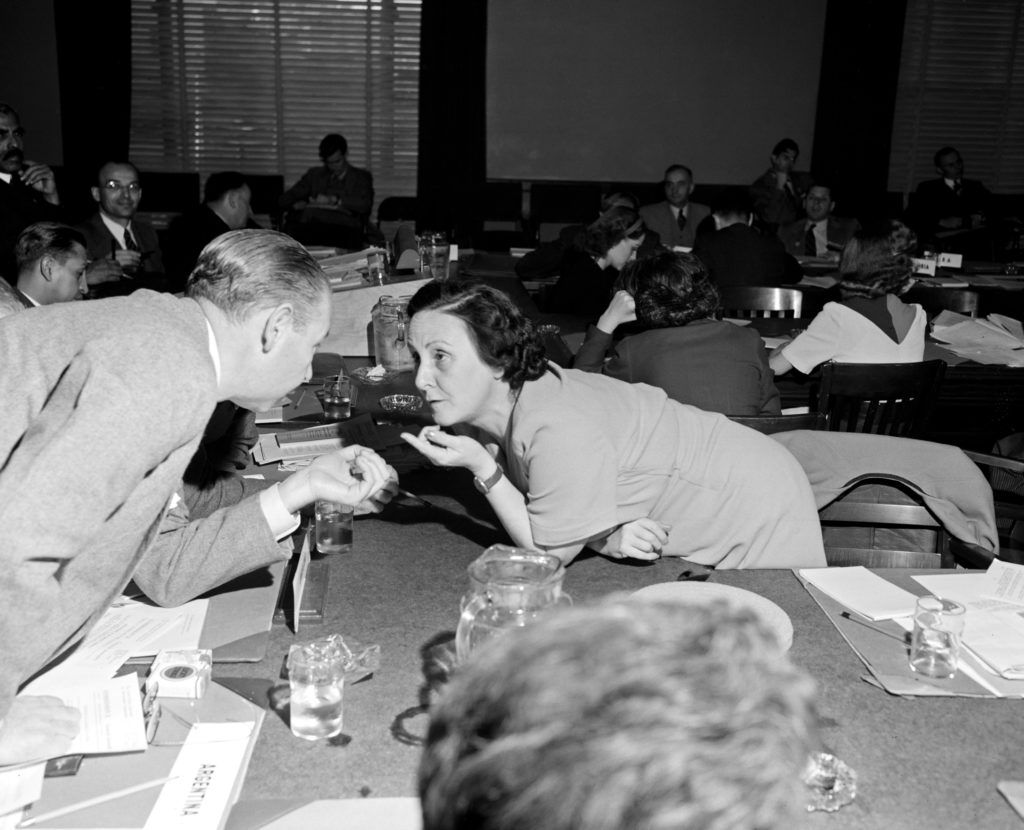
Berta Lutz, Delegate from Brazil (1945). UN Photo/Rosenberg.
Nevertheless, it was under pressure from two particularly tenacious South American activists, Bertha Lutz (Brazil) and Minerva Bernardino (Dominican Republic), that the drafters of the UN Charter included the words women and sex in the text. These feminists even had to battle against their Western colleagues who considered these clarifications "vulgar". Until then, no international legal document had proclaimed equal rights for women and men as an integral part of fundamental human rights, or considered gender differences as grounds for discrimination.
"No restrictions shall be placed by the Organization on the eligibility of men and women to participate in any capacity, under conditions of equality, in its principal and subsidiary organs." Article 8 of the Charter of the United Nations
Over the next three decades, the UN's work on women was mainly devoted to codifying their legal and civil rights. But it soon became clear that information gathering alone would not bring about change. In 1972, at a time when 92% of senior UN officials were men, Helvi Sipilä became the first woman to be appointed Deputy Secretary-General at the request of the outgoing Secretary-General, U Thant, a native of Myanmar.
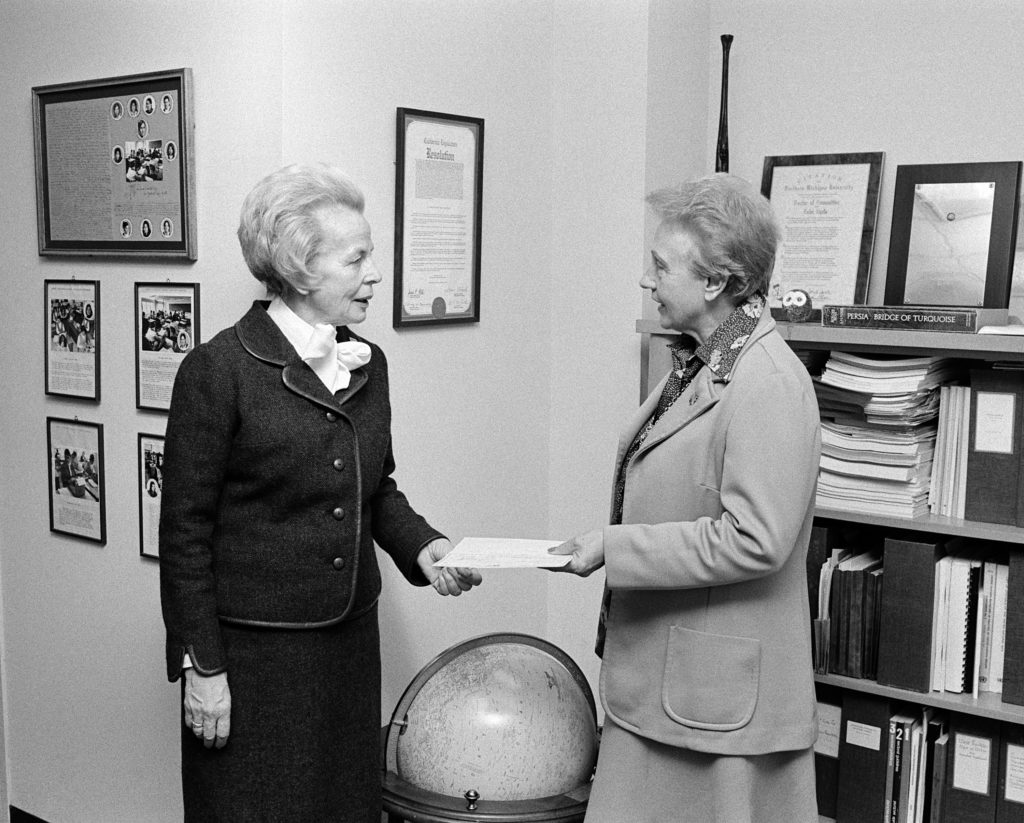
It was therefore quite natural that the then head of the UN, Kurt Waldheim (1972-1981), entrusted the Finnish woman with the organization and secretariat of the first World Conference on the Status of Women, held in Mexico City in 1975. The Nordic lawyer also had a major influence on the establishment of the International Women's Year in the same year and the Decade for Women (1975 and 1985), giving rise to two other international conferences: one in Copenhagen, Denmark (1980) and one in Nairobi, Kenya (1985). She was also instrumental in setting up the United Nations Development Fund for Women (UNIFEM).
The 90s: The pioneering era
The 90s were the years when the Secretaries-General of the United Nations moved from theory to practice, and when the promotion of women was in full swing. It was the Peruvian Javier Perez de Cuellar who paved the way for women by recommending Sadako Ogata, against all odds, to head the Office of the High Commissioner for Refugees (UNHCR) in 1991. It was the first time a woman had held such an important position in the United Nations system. During her tenure, the Japanese woman had to manage some of the biggest refugee crises of the 20th century, namely those arising from the situations in the former Yugoslavia, Rwanda and East Timor. She also had to deal with post-conflict returns in Cambodia and Ethiopia.
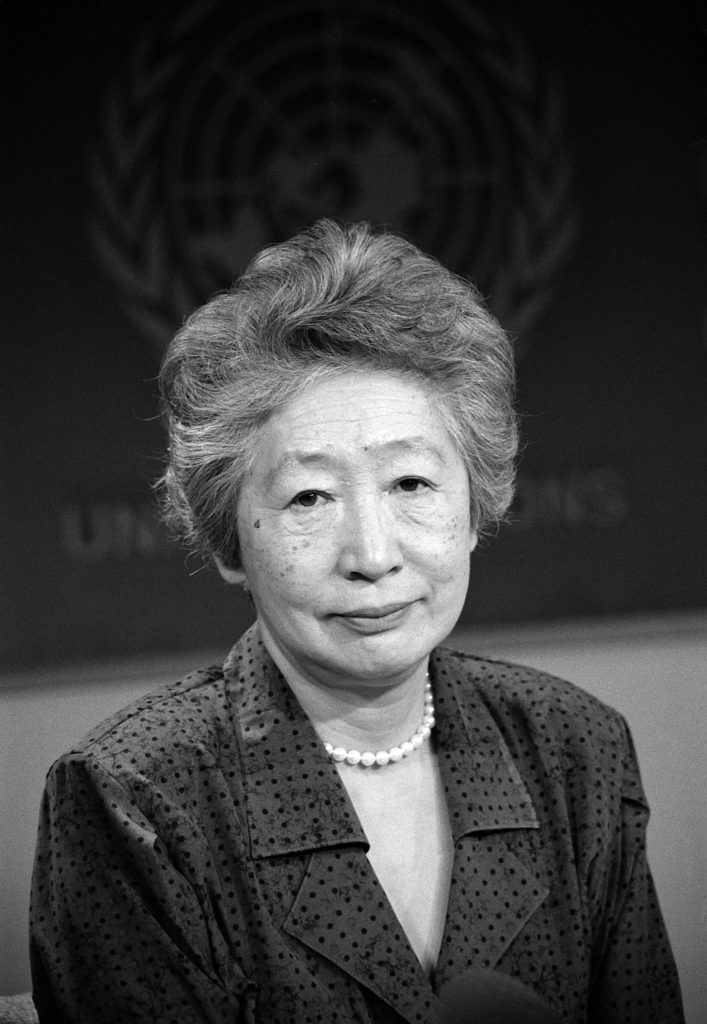
Sadako Ogata, High Commissioner for Refugees (UNHCR). Photo UN/John Isaac 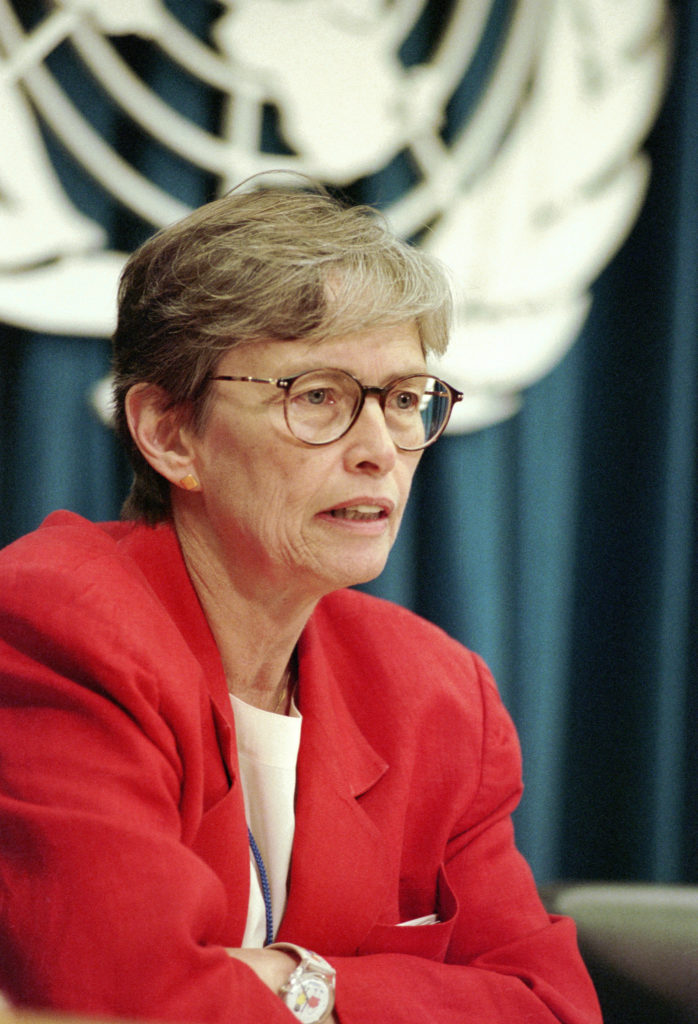
Carol Bellamy, UNICEF Executive Director. Photo UN/Eskinder Debebe
In 1995, Egypt's Boutros Boutros-Ghali appointed the American Carol Bellamy as the first woman to head UNICEF. Ghana's Kofi Annan accentuated the trend in 1997 by appointing former Irish President Mary Robinson to head the Office of the High Commissioner for Human Rights. The first woman to head the World Health Organization (WHO), Dr Gro Harlem Brundtland, former Norwegian Prime Minister, was elected in 1998.
"The report card on women's rights shows that, despite some progress, no country has achieved gender equality." Phumzile Mlambo-Ngcuka, Executive Director of UN Women
21st century: parity in sight
Despite parity at the top of many international organizations, and Secretary-General Antonio Guterres' commitment to achieving the fifth of the 17 Sustainable Development Goals (SDGs) by 2030, namely the enjoyment by women and girls of equitable rights and opportunities, free from violence and discrimination, the reality is quite different. As UN Women Executive Director Phumzile Mlambo-Ngcuka points out, "men account for 75% of parliamentarians, 73% of leadership positions, 70% of climate negotiators and almost all peacemakers."
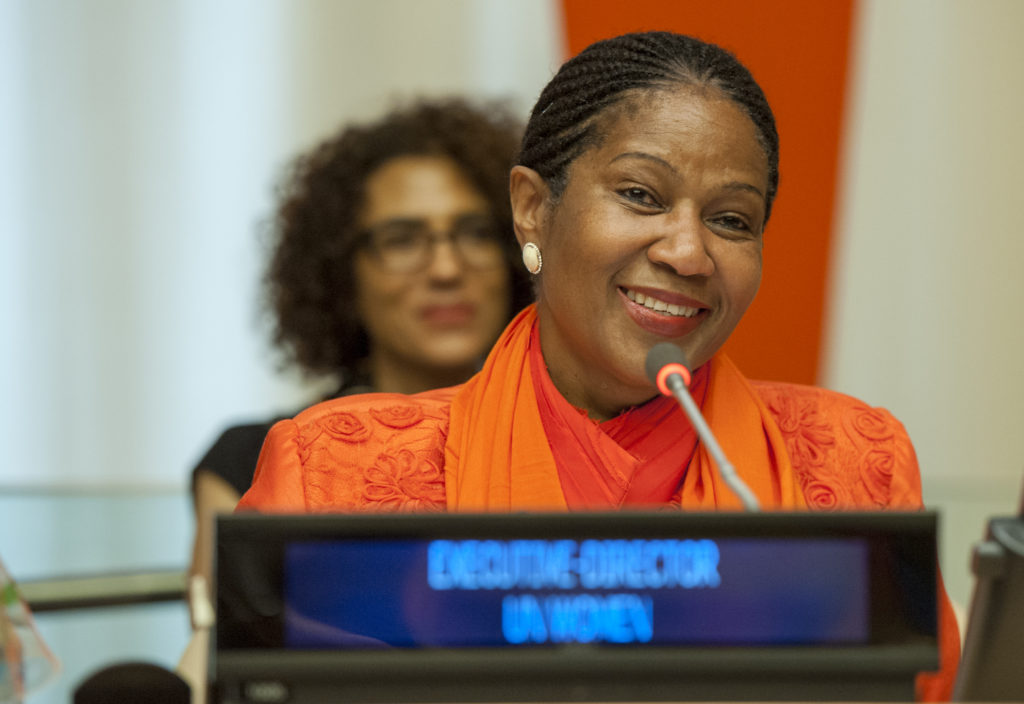
As we celebrate the 25th anniversary of the Beijing Conference, we can see that progress has been made since the adoption of the Beijing Platform for Action. Over the past decade, 131 countries have passed laws promoting gender equality. But hard-won gains are being reversed, and the lack of effective action to boost women's representation in the arenas of power does not bode well. Within the UN system, during the period from January 1, 2016 to December 31, 2017, the share of women among Professional and higher-level staff in the UN system rose from 42.8% to 44.2%. The biggest increases were recorded at the highest levels, among Under-Secretaries-General and Assistant Secretaries-General. Women are still well represented at the beginning of their careers, i.e. at P-1 and P-2, although their share declines progressively as one moves up the career ladder. There are still discrepancies between headquarters and non-headquarters duty stations, where the proportion of women in the Professional and higher ranks is 8.7% lower.
COVID-19: fate or opportunity?
Since the beginning of the health crisis linked to COVID-19, women have been on the front line of the health and care services they provide, while at the same time running the daily risk of being infected by the coronavirus. Worldwide, women account for 69% of healthcare professionals and 88% of nursing staff, but around 72% of the world's healthcare executives are men. The gender pay gap, which currently stands at 16% worldwide, could increase. Female workers, who earn on average 84% of what men earn, are the first to be penalized by the current context.
On October1, 2020, at the high-level meeting convened by the President of the General Assembly to celebrate the 25th anniversary of the Beijing Platform for Action, member states will have to demonstrate their political commitment at the highest level to make a difference. This health crisis is perhaps an opportunity to be seized to build a more egalitarian future, and not to lose the gains of several decades of struggle in the space of a few months.


